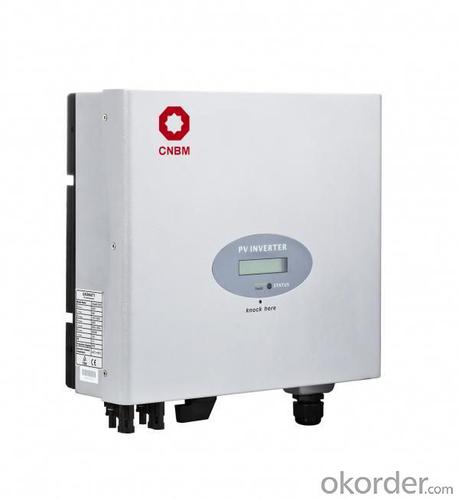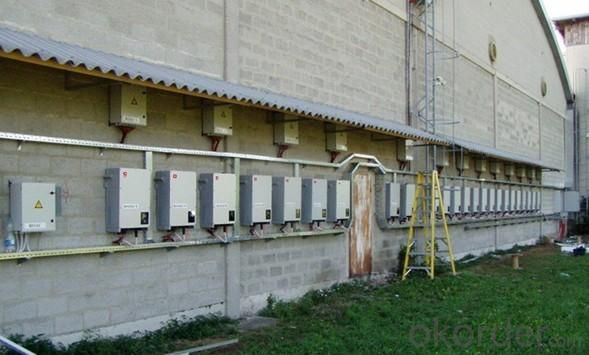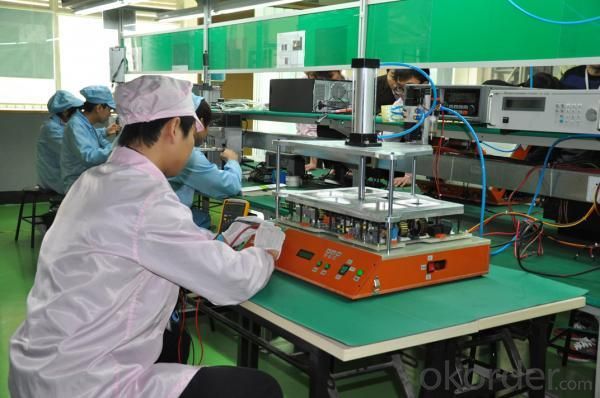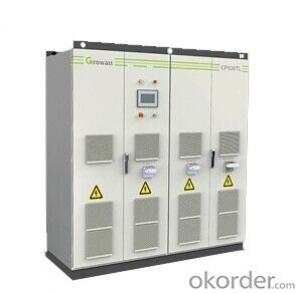AC DC Solar Inverter CNBM-2000TL Grid Tied
- Loading Port:
- SHENZHEN
- Payment Terms:
- TT
- Min Order Qty:
- 1 set pc
- Supply Capability:
- 5000 per month pc/month
OKorder Service Pledge
OKorder Financial Service
You Might Also Like
Features of Grid Tied Solar Inverter CNBM-2000TL
CNBM-2000TL is simple national setting of line supply monitoring, Easy country configuration, with Multi-language,display, currently available for most of the countries over the world.With technical creativity and scientific management, the factory established first class R&D and test centers, as well as management and R&D teams comprising of PhDs and masters with overseas qualification.
The full range of CNBM single phase inverters has received VDE, CE, G83/1, G59/2, ENEL2010, VDE4105, C10/C11, AS4777 etc.
Maximum efficiency of 97.8% and wide input voltage range, Internal DCswitch,MTL-String, Sound control,Bluetooth/RF technology /Wi-FiTransformerless,GT topology
Technical data of Grid Tied Solar Inverter CNBM-2000TL
Model | CNBM-2000TL | CNBM-3000TL | |
Input data (DC) |
|
| |
Max. DC power | 2300W | 3200W | |
Max. DC voltage | 500V | 500V | |
Start voltage | 150V | 150V | |
PV voltage range | 100V-500V | 100V-500V | |
Max. input current | 12A | 12A | |
Number of MPP trackers /strings per MPP tracker | 1/2 | 1/2 | |
Output (AC) |
| ||
Rated AC output power | 2000W | 2850W | |
Max. AC power | 2200W | 3000W | |
Max. output current | 11A | 15A | |
Power factor | 1 | 1 | |
THDI | <3% | <3% | |
AC connection | Single phase | Single phase | |
Efficiency |
| ||
Max. efficiency | 97.3% | 97.3% | |
Euro weighted efficiency | 96.50% | 96.50% | |
MPPT efficiency | 99.50% | 99.50% | |
Protection devices |
| ||
Output over voltage protection-varistor | yes | yes | |
Ground fault monitoring | yes | yes | |
Grid monitoring | yes | yes | |
General Data |
| ||
Dimensions (W / H / D) in mm | 360/329/132 | 360/329/132 | |
Weight | 11.7KG | 12.2KG | |
Operating temperature range | –25°C ... +60°C | –25°C ... +60°C | |
Altitude | 2000m(6560ft) without derating | ||
Self-Consumption night | < 0.5 W | < 0.5 W | |
Topology | Transformerless | ||
Cooling concept | Natural | Natural | |
Environmental Protection Rating | IP65 | IP65 | |
Features |
| ||
DC connection | H4/MC4(opt) | H4/MC4(opt) | |
Display | LCD | LCD | |
Interfaces: RS485/RS232/Bluetooth / RF/Zigbee/Wifi | yes/yes/opt/opt/opt | ||
Warranty: 5 years / 10 years | yes /opt | ||
Certificates and approvals | CE、VDE 0126-1-1、DK5940、G83/1-1、G59/2、RD1663、EN50438、 VDE-AR-N4105、CEI-021、IEC-62109、ENEL-Guide | ||
With a R&D team more than 100 engineers,40% of the staff, who has been deeply engaged in the photovoltaic industry for 10 years, CNBM takes the mission to increase the inverter availability and efficiency, putting continuous innovation to make CNBM inverter easier for installation and operation, and more cost-effective for solar plant construction.
Figure 1 the production of Grid Tied Solar Inverter CNBM-2000TL
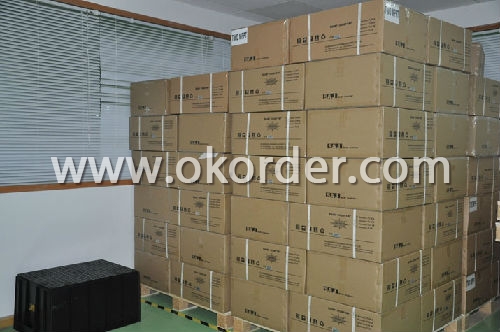
Figure 2 the test lab of Grid Tied Solar Inverter CNBM-2000TL
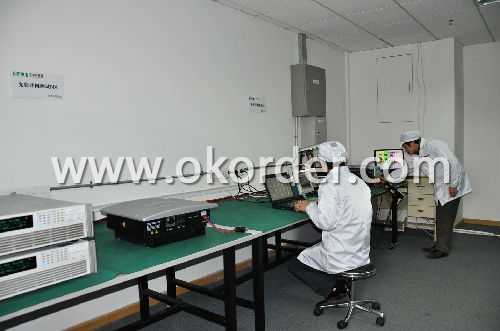
- Q: Can a solar inverter be used with a solar-powered air purification system?
- Yes, a solar inverter can be used with a solar-powered air purification system. A solar inverter converts the direct current (DC) generated by solar panels into usable alternating current (AC) electricity, which can power various appliances or devices, including air purification systems. By connecting a solar inverter to a solar-powered air purification system, it can efficiently operate using renewable energy from the sun.
- Q: Are there any noise emissions from a solar inverter?
- Yes, solar inverters do produce some noise emissions. However, the noise levels are generally very low and often not noticeable, as the inverters are designed to operate quietly.
- Q: How does a solar inverter handle variations in ambient temperature?
- A solar inverter handles variations in ambient temperature by incorporating temperature compensation mechanisms. These mechanisms allow the inverter to adjust its operation and optimize performance based on the temperature conditions. By monitoring the temperature, the inverter can regulate voltage levels, adjust power outputs, and protect itself from overheating. This ensures that the inverter operates efficiently and reliably under different ambient temperature conditions.
- Q: How does a solar inverter handle voltage regulation during sudden load changes?
- A solar inverter handles voltage regulation during sudden load changes by continuously monitoring the voltage and current outputs from the solar panels. When there is a sudden increase or decrease in the load, the inverter adjusts its power output accordingly to maintain a stable and consistent voltage level. This is achieved through a combination of control algorithms and power electronics within the inverter, ensuring that the voltage remains within an acceptable range to meet the demands of the load.
- Q: What is the role of a grid monitoring feature in a solar inverter?
- The role of a grid monitoring feature in a solar inverter is to constantly monitor the electrical grid for voltage, frequency, and other parameters. This feature ensures that the solar inverter is synchronized with the grid and operates within the specified limits. It helps in maintaining a stable and reliable connection between the solar system and the grid, preventing any damage to the inverter or the grid. Additionally, grid monitoring also enables the solar inverter to detect any faults or abnormalities in the grid and take appropriate measures to protect the system and ensure safe operation.
- Q: Can a solar inverter be monitored remotely?
- Yes, a solar inverter can be monitored remotely. With the help of advanced technologies and internet connectivity, solar inverters can be connected to a monitoring system that allows real-time monitoring and control from a remote location. This remote monitoring feature enables users to track the performance, energy production, and potential issues of their solar inverters without being physically present at the installation site.
- Q: Can a solar inverter be used for three-phase power systems?
- Yes, a solar inverter can be used for three-phase power systems. Three-phase solar inverters are specifically designed to convert the DC power generated by solar panels into AC power for three-phase electrical systems. These inverters are capable of handling higher power loads and are commonly used in commercial and industrial settings where three-phase power is required.
- Q: What is the maximum DC input current for a solar inverter?
- The maximum DC input current for a solar inverter can vary depending on the specific model and manufacturer. It typically ranges from 10 to 60 amps, but it is best to consult the product specifications or contact the manufacturer for the exact maximum DC input current of a particular solar inverter.
- Q: What is the role of a communication interface in a solar inverter?
- The role of a communication interface in a solar inverter is to facilitate the exchange of information and data between the inverter and other devices or systems. It allows for monitoring, control, and communication with the solar inverter, enabling real-time performance monitoring, remote management, and integration with other renewable energy systems or smart grid networks.
- Q: How does a solar inverter synchronize with the grid?
- A solar inverter synchronizes with the grid by constantly monitoring the grid's voltage and frequency. It adjusts its own output to match the grid's characteristics, ensuring that the electricity it generates is in phase with the grid's power supply. This synchronization process allows the solar inverter to seamlessly connect and feed electricity into the grid, maximizing the efficiency and reliability of the solar power system.
Send your message to us
AC DC Solar Inverter CNBM-2000TL Grid Tied
- Loading Port:
- SHENZHEN
- Payment Terms:
- TT
- Min Order Qty:
- 1 set pc
- Supply Capability:
- 5000 per month pc/month
OKorder Service Pledge
OKorder Financial Service
Similar products
Hot products
Hot Searches
Related keywords



